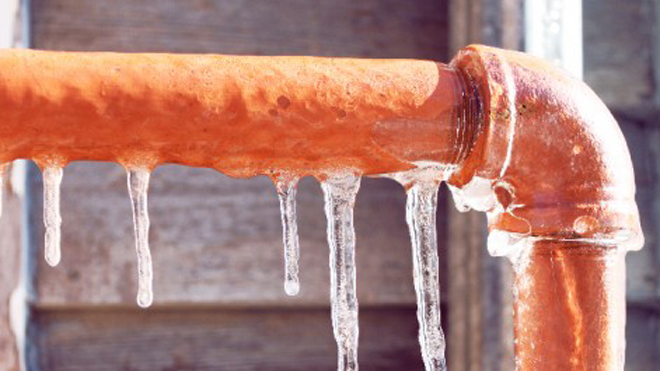Preventing Frozen Pipes in Cold Weather: Key Tips
Book An Estimate NowHow do you actually feel in regards to Preventing and dealing with frozen pipes?

Cold weather can ruin your plumbing, particularly by freezing pipelines. Here's exactly how to stop it from happening and what to do if it does.
Introduction
As temperature levels decline, the risk of icy pipes rises, possibly resulting in pricey fixings and water damages. Understanding how to avoid frozen pipes is vital for homeowners in cool climates.
Avoidance Tips
Shielding prone pipes
Cover pipelines in insulation sleeves or utilize warmth tape to secure them from freezing temperatures. Concentrate on pipelines in unheated or external areas of the home.
Heating methods
Keep interior rooms adequately warmed, specifically locations with plumbing. Open up cupboard doors to permit warm air to distribute around pipes under sinks.
Exactly how to identify icy pipes
Search for decreased water flow from faucets, unusual smells or sounds from pipes, and visible frost on subjected pipelines.
Long-Term Solutions
Structural adjustments
Consider rerouting pipelines away from outside walls or unheated locations. Add additional insulation to attic rooms, basements, and crawl spaces.
Updating insulation
Invest in premium insulation for pipelines, attics, and wall surfaces. Correct insulation assists keep consistent temperature levels and lowers the threat of icy pipelines.
Protecting Outside Plumbing
Yard hoses and outside faucets
Disconnect and drain pipes yard tubes prior to winter months. Install frost-proof faucets or cover outdoor taps with insulated caps.
Recognizing Icy Pipes
What causes pipes to freeze?
Pipelines ice up when subjected to temperatures below 32 ° F (0 ° C) for extended periods. As water inside the pipelines ices up, it increases, putting pressure on the pipeline wall surfaces and potentially causing them to rupture.
Threats and problems
Frozen pipes can bring about water supply interruptions, building damage, and expensive repair work. Burst pipelines can flooding homes and create considerable architectural damage.
Signs of Frozen Pipes
Determining frozen pipes early can avoid them from breaking.
What to Do If Your Pipelines Freeze
Immediate activities to take
If you think frozen pipelines, maintain faucets open up to alleviate pressure as the ice melts. Use a hairdryer or towels soaked in warm water to thaw pipelines slowly.
Final thought
Preventing icy pipelines calls for positive procedures and fast responses. By recognizing the reasons, indications, and safety nets, house owners can safeguard their plumbing throughout cold weather.
5 Ways to Prevent Frozen Pipes
Drain Outdoor Faucets and Disconnect Hoses
First, close the shut-off valve that controls the flow of water in the pipe to your outdoor faucet. Then, head outside to disconnect and drain your hose and open the outdoor faucet to allow the water to completely drain out of the line. Turn off the faucet when done. Finally, head back to the shut-off valve and drain the remaining water inside the pipe into a bucket or container. Additionally, if you have a home irrigation system, you should consider hiring an expert to clear the system of water each year.
Insulate Pipes
One of the best and most cost-effective methods for preventing frozen water pipes is to wrap your pipes with insulation. This is especially important for areas in your home that aren’t exposed to heat, such as an attic. We suggest using foam sleeves, which can typically be found at your local hardware store.
Keep Heat Running at 65
Your pipes are located inside your walls, and the temperature there is much colder than the rest of the house. To prevent your pipes from freezing, The Insurance Information Institute suggests that you keep your home heated to at least 65 degrees, even when traveling. You may want to invest in smart devices that can keep an eye on the temperature in your home while you’re away.
Leave Water Dripping
Moving water — even a small trickle — can prevent ice from forming inside your pipes. When freezing temps are imminent, start a drip of water from all faucets that serve exposed pipes. Leaving a few faucets running will also help relieve pressure inside the pipes and help prevent a rupture if the water inside freezes.
Open Cupboard Doors
Warm your kitchen and bathroom pipes by opening cupboards and vanities. You should also leave your interior doors ajar to help warm air circulate evenly throughout your home.

As an enthusiastic person who reads about How to prepare your home plumbing for winter weather, I figured sharing that piece of writing was a smart idea. Liked our blog entry? Please quickly share it. Help other people find it. Thank-you for your time invested reading it.
Go Deal Now